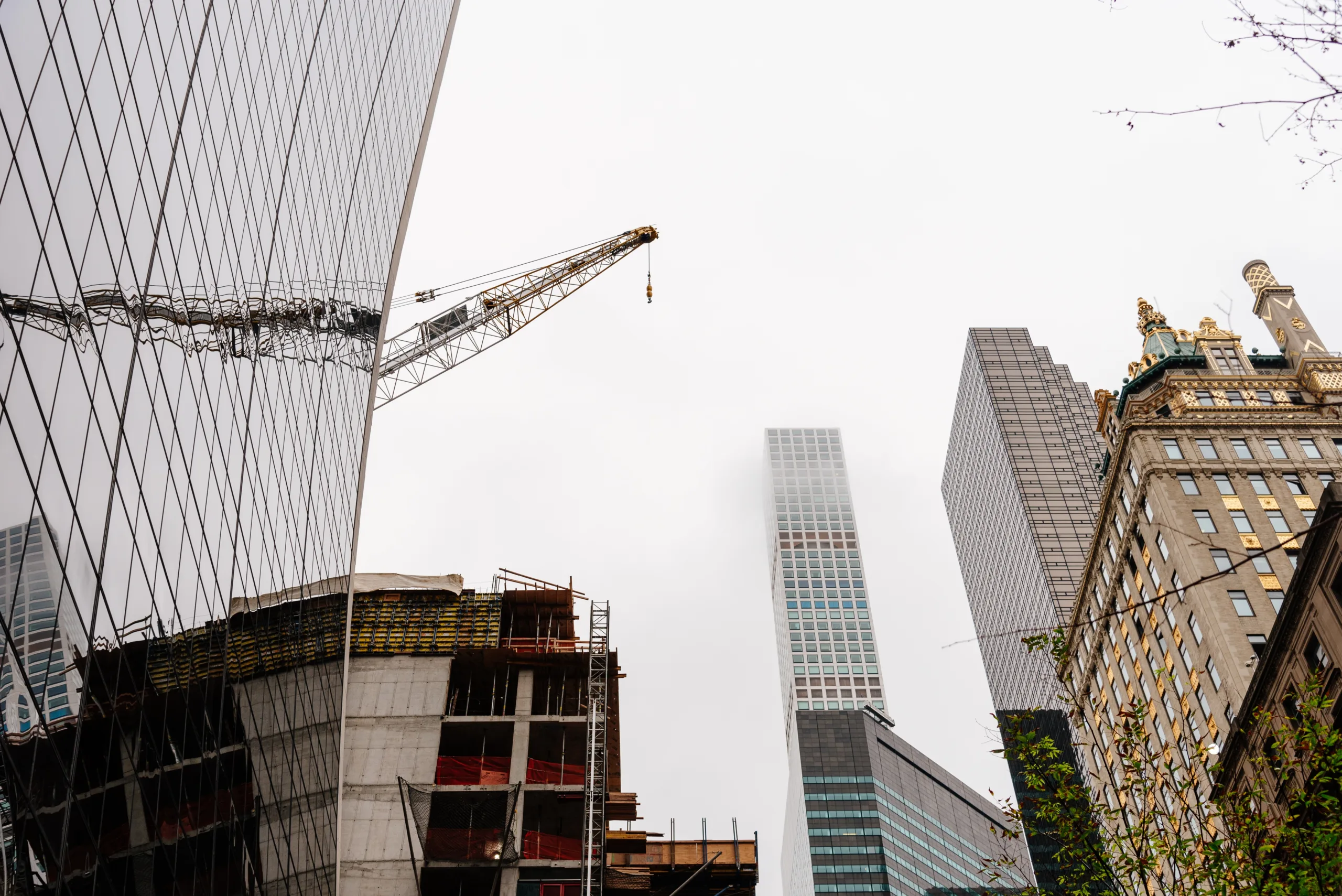- Developers and contractors are navigating unpredictable tariffs, rising material costs, and labor shortages that are straining budgets and financing.
- Firms are stockpiling materials and rewriting contracts to manage risks, while others are experimenting with joint venture–style partnerships between developers and builders.
- The financial squeeze is contributing to a rise in subcontractor defaults and bankruptcies, intensifying the pressure on project timelines and delivery.
Uncertainty Everywhere
As per Bisnow, developers, contractors, and subcontractors in New York say construction today feels like a never-ending game of Whac-A-Mole. Supply chain issues, tariff swings, and labor shortages have always been part of the job. What’s new is the speed and scale of the changes.
“Every time we think we’ve got a little bit of clarity, something else pops up,” said Louis Martinelli, regional business manager at SourceBlue, at Bisnow’s New York Construction and Development conference this week.
The Tariff Effect
Tariffs are now a major cost driver. Iron and steel prices rose 9% in the past year, while copper wire and cable climbed 13%, according to Associated Builders and Contractors.
Developers like L&L Holding Co.’s Kevin Hoey are using pandemic playbooks — pre-purchasing materials and renting warehouse space — to avoid shortages. “I’d rather have pallets of lighting sitting in the Bronx … than getting stuck not being able to finish the ceiling,” Hoey said.
Contract terms are also shifting. RXR’s Jason Roberts said some construction managers are adding clauses that pass tariff costs onto developers. Still, “if you’re in the middle of a lump sum deal, you’re getting stuck,” he said.
Get Smarter about what matters in CRE
Stay ahead of trends in commercial real estate with CRE Daily – the free newsletter delivering everything you need to start your day in just 5-minutes
Closer Collaboration
Instead of fighting, many developers and contractors are working more closely together. Anthony Rinaldi, CEO of The Rinaldi Group, said developers now propose joint venture–style partnerships with builders to align incentives and cut risk. “I’ve never seen developers asking me to partner with them so much before,” he said.
That cooperation has become critical as capital markets tighten and financing grows more expensive.
Rising Risk of Default
Rising costs aren’t the only threat. Subcontractors are struggling with thin margins and cash flow, leading to more defaults than just 18 months ago.
“We’re in a time where we’re seeing a lot of vendors and subcontractors go out of business,” said Shawmut Design and Construction’s Charles Avolio. His firm has already faced three defaults on one large university project.
Builders now plan for the possibility of bankruptcies. Rob Rapp of The Baldwin Group said some managers even pre-label stored materials so they can reclaim them if a subcontractor folds.
Why It Matters
Financing stress, rising materials costs, and contractor instability are forcing developers to rethink how they manage risk. Long-standing tension between developers and contractors is giving way to more cooperative models.
With subcontractor defaults rising and tariffs shifting costs overnight, volatility may be the new normal for construction.

















